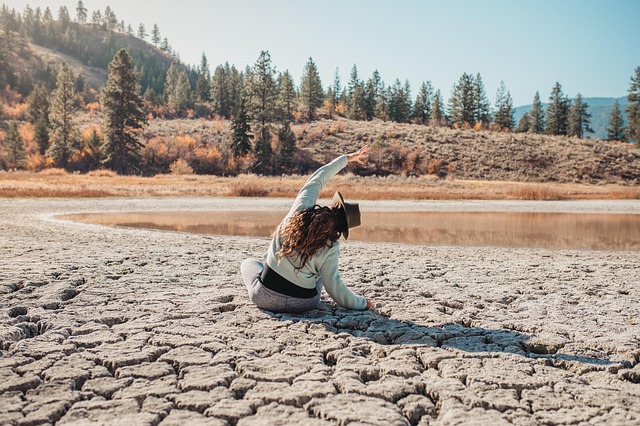In the quiet moments between the bustle of daily life, a subtle yet powerful force shapes how we see ourselves, how we treat our skin, and how we connect with the world around us. That force is emotionalism—a deep, intuitive understanding that feelings are not merely reactions but guides, teachers, and mirrors. When we honor emotionalism, we invite the soul to speak, to heal, and to illuminate the path toward authentic beauty and self‑education.
Emotionalism as a Spiritual Compass
Spirituality often feels abstract, but emotionalism grounds it in lived experience. The soul, by definition, is an inner vessel that holds the wisdom of countless lessons. When we listen to our emotions with reverence, we align ourselves with that wisdom. Rather than dismissing a sudden sadness or a burst of joy, we pause, breathe, and ask: what does this feeling want me to know? In this dialogue, emotionalism becomes a spiritual compass, pointing toward what we need to nurture, release, or celebrate.
- Recognizing the body as an instrument of emotional expression.
- Using feelings to chart spiritual priorities.
- Transforming raw emotion into compassionate action.
The Skin as an Extension of the Soul
Our skin is not just a protective barrier; it is a living tapestry that mirrors our inner state. When emotionalism is practiced consciously, the skin responds—its texture, tone, and radiance shift in tandem with our emotional rhythm. A calm mind often translates to a supple, luminous complexion, while unresolved anger may manifest as inflammation or dullness. Understanding this link invites a new paradigm of beauty: self‑education in skin care that starts from the inside out.
“Your skin is a window to your soul. If you keep it clean, it reflects a clear spirit.” – Anonymous Insight
Mindful Rituals for Emotional Balance
Practicing emotionalism does not mean indulging every whim; it means cultivating mindful rituals that honor feelings while guiding them toward constructive outcomes. One simple practice is the nightly emotion journal—write a sentence for each major feeling that arose during the day. When the words flow, they clarify the emotional patterns that need attention. Complement this with a gentle skin routine: cleanse with a hydrating serum, apply a soothing mask, and finish with a nourishing balm. Each step serves as a ritual of love, reinforcing the bond between inner emotions and outer beauty.
- Morning affirmation: “I greet the day with an open heart.”
- Midday check‑in: pause, inhale, and scan for tension.
- Evening wind‑down: cleanse, reflect, and release.
Self‑Education Through Emotional Curiosity
True self‑education begins with curiosity about our emotional landscape. Instead of labeling feelings as “good” or “bad,” we explore their origin, purpose, and message. This inquisitive stance turns each emotional experience into a learning opportunity. When we ask, “What am I missing in my life that this feeling points to?” we invite a deeper understanding of our values, boundaries, and aspirations.
Emotionalism thus expands the definition of knowledge. It teaches us that the most profound truths about ourselves are often whispered in the quiet after a surge of emotion, not in lecture halls or textbooks.
Therapeutic Touch: The Interplay of Emotion and Skin Health
Scientific research increasingly supports the connection between emotional well‑being and dermatological health. Stress hormones, for example, can trigger breakouts, while a sense of calm can reduce inflammation. By consciously integrating emotionalism into skin care practices—mindful breathing before applying makeup, listening to music that soothes, or setting intentions for each step—we create a therapeutic loop that nurtures both psyche and epidermis.
This holistic approach aligns with the ancient philosophy that beauty originates from harmony within. When we honor emotionalism, we give our skin the compassion it needs to flourish, and we, in turn, become vessels of genuine, radiant beauty.
Community and Shared Emotional Journeys
While the journey of emotionalism is deeply personal, sharing it with a supportive community amplifies its power. Group discussions, creative workshops, or even online forums allow us to exchange stories of emotional insight and skin transformation. Listening to others’ narratives reminds us that we are not alone in the ebb and flow of feelings; we are part of a collective tapestry that weaves individual threads into a larger pattern of resilience.
In communal settings, emotionalism transforms into a shared practice—a dance of vulnerability and growth that benefits everyone involved.
Living the Path: Daily Manifestations of Emotionalism
Integrating emotionalism into everyday life is less about grand rituals and more about mindful moments. Begin each morning with a brief meditation that centers you on your heart’s current state. Throughout the day, pause when a strong emotion surfaces, breathe, and note its color, intensity, and duration. In the evening, reflect on how those emotions influenced your choices, interactions, and even the health of your skin.
By treating emotionalism as a living practice, you cultivate a continuous loop of awareness, care, and learning. Over time, this loop deepens your connection to the soul, enhances your spiritual perspective, and creates a lasting beauty that radiates from within.



